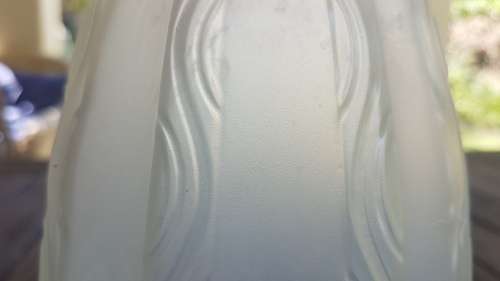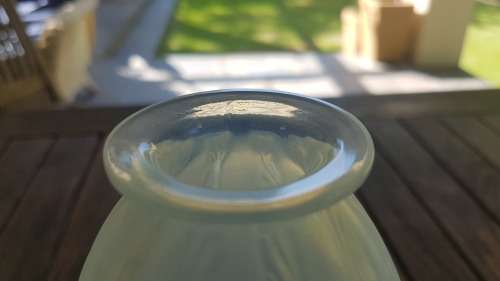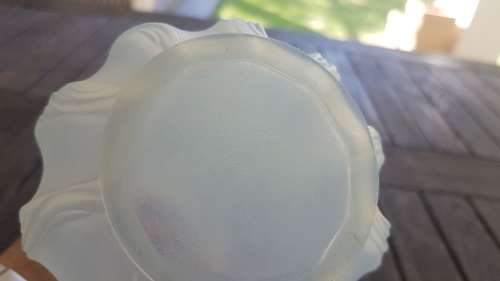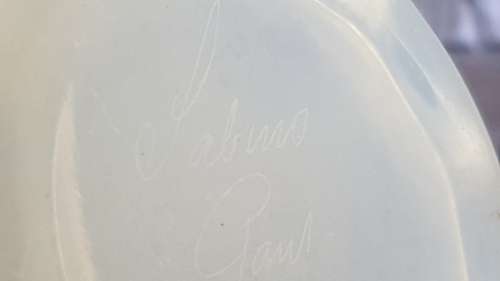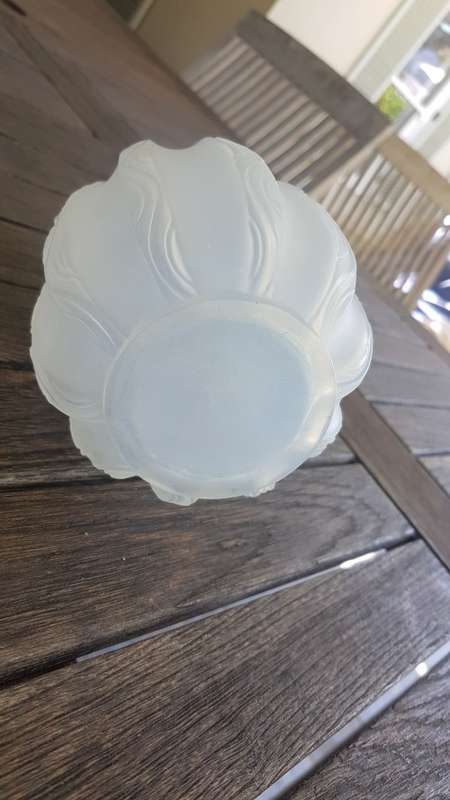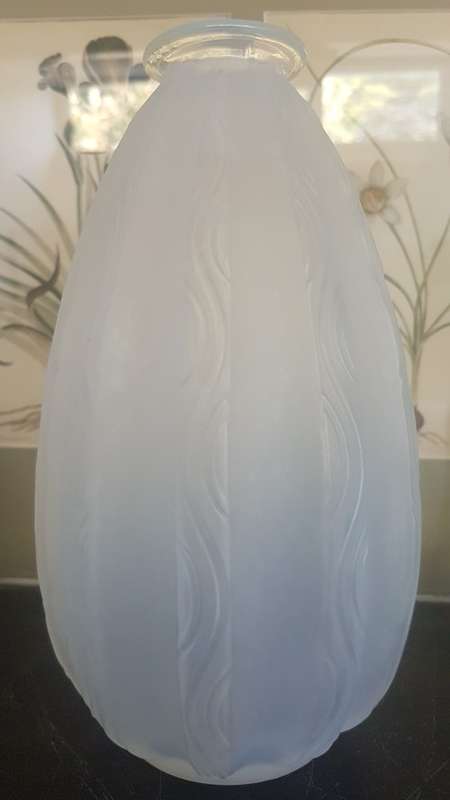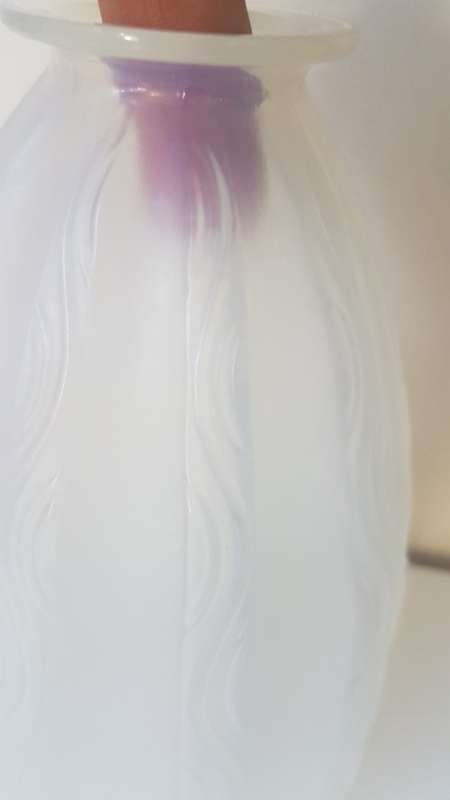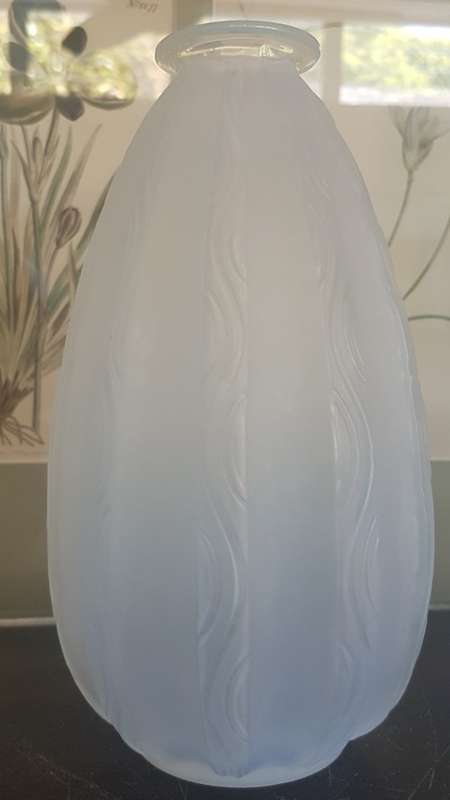Excellent condition. No chips, scratches, cracks. Lovely mauve tinge to glass, a light pinky purply hint. Wonderful smoky opalescent opaque glass.
The undulating surface design was called by Sabino in French "Ondulation" , which means "ripples".
Hand etched signature on the base reads Sabino Paris. This indicates that the vase was meant for the domestic French market,not for export, and also indicates a probable date in the 1930s.
19 cm high and 10 cm wide.
Rare to see a superlative piece of French vintage art deco glass like this here in South Africa. Hard to get here.
Marius Sabino, founder of Sabino Glass company, was born in Sicily in 1878 and moved to France while he was still a young boy. He studied at L'Ecole Nationale des Arts Decoratifs and the Beaux Arts de Paris, where he became particularly interested in the challenges that the advent of electricity would have on glass manufacture. It was through electric lights that Sabino came to the production of glass. In fact, on his return from the first World War (where he had joined as a volunteer), he founded a factory which manufactured traditional lights fittings of wood or bronze and then quickly changed to glass.
In 1925, Sabino created an opalescent glass with a blue hue and iridescent impressions of either clouds in a blue sky, light striking a soap bubble or a reflection from water surface. He designed and made special lighting for a luxury cruise ship (Ile de france) in 1927, and a lighted fountain column for the Grand Salon of Normandy in 1935.
The glass of the chandelier was no longer part of the design, it was the principal component. His chandeliers, which were often monumental in size, were made to compliment the architecture of the day. Apart from chandeliers, he also created a multitude of vases and decorative objects, making great use of his expertise as a sculptor. In particular, busts and statues of women, and an exceptionally large range of animals with stylized features-sometimes in extraordinary large sizes. For example, in 1931 he created a large fish in a limited edition, two of which were bought by Josephine Baker and Maurice Chevalier.
Some words about SCC (Sabino Crystal Company) and its new items still made today
Sabino's early opalescent glass had a higher arsenic content than most of his competitors, but his glass formula is reported to have changed after World War II to reduce this component. The earlier glass is said to feel and look different with a softer and "soapy" feel.
Early Sabino glass was marked "Sabino France" if intended for export, or "Sabino Paris" if intended for sale within France. Larger pieces still carry the "Sabino Paris" signature, which was etched onto the base of the pieces.
